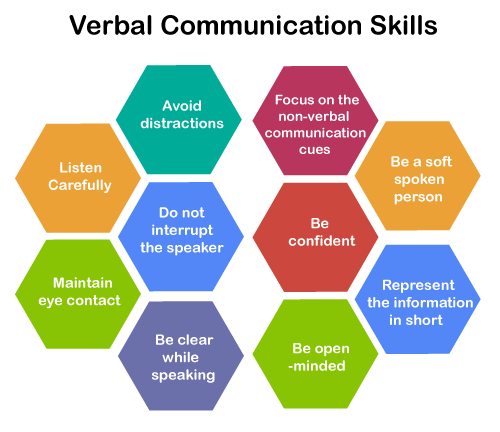What is Verbal communication?
Verbal communication involves expressing thoughts, feelings, and ideas through words. Communicating involves listening to what others have to say and responding appropriately.

When communicating with patients or residents, you may use an array of verbal communication skills. The following are a few examples, but not limited to:
Listening :
In verbal communication, it is extremely important to listen carefully to what the resident is saying.
Paraphrasing :
Replacing something that someone just said with a different way to make sure you understand what they said is called paraphrasing. In response to someone stating, ‘I’ve had chest pain since Monday,’ you could simply say, ‘So you’ve had it for five days now’. This will confirm the length of time they’ve had it.
The use of both open and closed questions is recommended :
open questions often lead to long answers, such as ‘Tell me more about your pain’. Residents are often able to express their feelings and opinions alongside scientific information and tell you what they feel is relevant. When obtaining a history from a resident, it can be very helpful. Unlike open questions, closed questions can be answered in one word or a short phrase. The most common type of closed question is one that elicits yes or no answers, such as ‘Are you in pain now?’. Frequently, they can be useful when a specific question needs to be answered quickly. Communicating with residents is most effective when you use a mix of open-ended and closed-ended questions. Using open questions as a starting point and narrowing it down to more closed questions can be helpful.
Clarification of information :
The process of clarifying information involves asking residents follow-up questions to resolve any ambiguities. For instance, a resident might tell you that he has chest pains. Follow up this statement with a question such as ‘Where is the pain in your chest?’. This helps you clarify the exact location of their pain and can be helpful information for those considering the cause of the resident’s chest pain.
Making Summary :
the act of repeating information back to a resident, often in an abridged form, in order to confirm the accuracy of the information. By doing this, you give residents the opportunity to correct any inaccurate information in your summary.